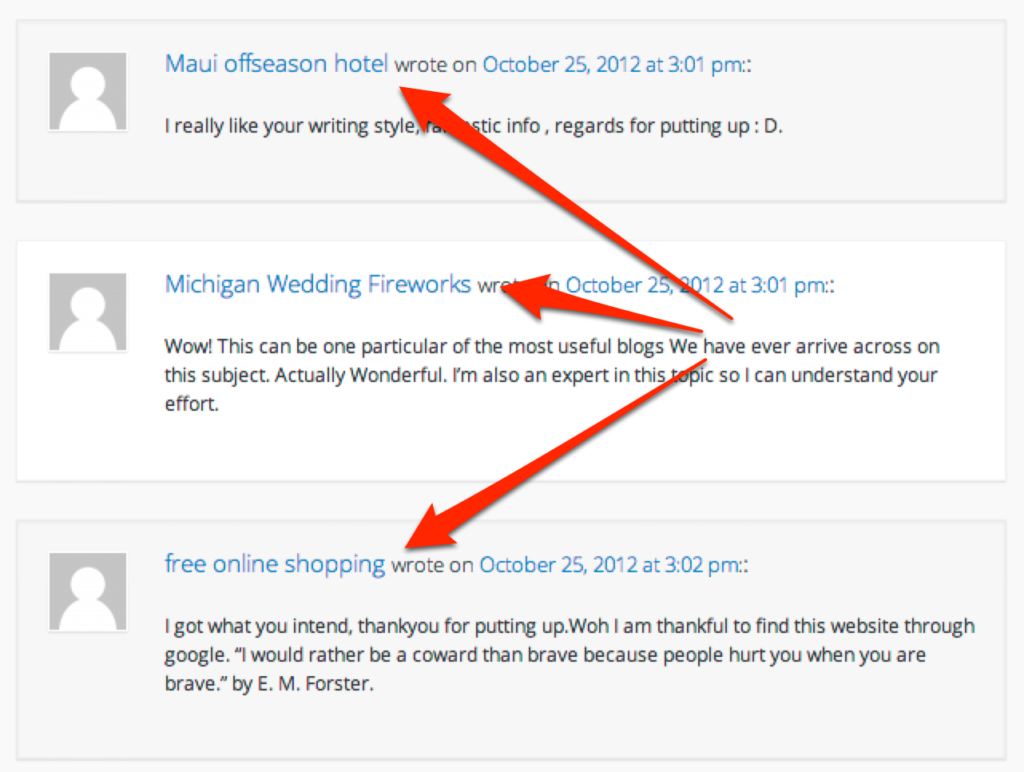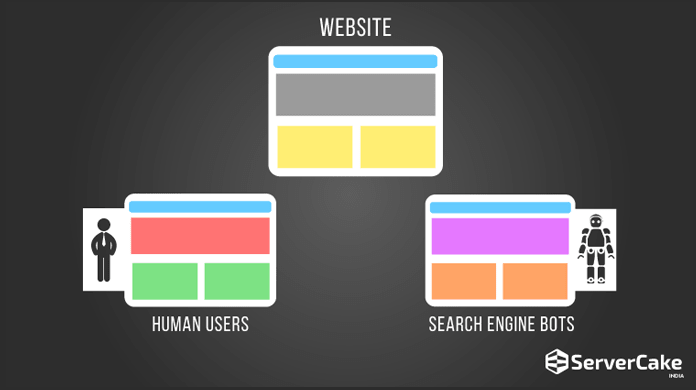Today is Halloween – a popular US holiday that is now celebrated worldwide for no apparent reason, but has over 20 million online searches and hence is celebrated by the SEO community.
In the spirit of Halloween, we decided to compile a list of the top 6 SEO Horror Stories that occurred over the decade and what you can learn from them to save you from a horror story of your own.
Pro Tip: To avoid one of these SEO nightmares, try Myposeo’s SEO Audit tool and stay ahead of the game.

While the BMW case in 2006 and SearchKing’s case with Google in 2007 are infamous in SEO history, some companies did not learn their lesson.
- We asked SEO consultant and ex-Google engineer Fili Wiese to share his most terrifying situation that he has faced in his career as an expert in the field. Here’s what he told us:

‘’Let me start by saying that even in the worst possible situation any website can be recovered and do well in Google Search again. Now truly horrific SEO situations, the kind of scenarios where everything that can also go wrong in the worst possible way are also very rare. Some SEO mistakes are common, but it is an exception for a site to be so bad in every regard as that everything has to be changed in order to salvage it’s rankings. That having said, I do recall a situation that I encountered about two years ago.
An international, multilingual retail website of a major consumer brand did get almost everything wrong indeed. With only a few thousand legitimate landing pages they managed to create a spider trap using parameters. At the same time several staging servers were open for crawling and indexing.
Both these issues combined culminated as tens of millions of landing pages with duplicate or placeholder content were indexed by Google. Canonicals were off, which made Google to distrust the signal and pick and choose landing pages at random to rank. In consequence not only cannibalization but also poor and further deteriorating user signals pushed the site over the edge with impressions and CTR both nosediving.
The situation was further aggravated by a Google penalty aka manual spam action issued for PageRank passing link building conducted years ago, and of course, long forgotten. The penalty was left to linger around, rather than to address and remove it, which made the situation really bad.
The final nail in the coffin for the site rankings however was structural, rather then due to particular SEO signals. The website was operated independently by regional, language sales teams who chose to use utterly different CMS among others. Worse yet, the specific corporate culture prevented them from cooperating, in consequence making change a very slow process. While this was about the worst case scenario, then site could and was recovered, even though it took a long time and some fresh thinking to get there. And most importantly, despite all the efforts needed it was also well worth it, too.’’
Fili was also the senior technical lead in the Google Search Quality team and currently works at Search Brothers where he offers SEO consulting services with SEO audits and training and successfully recovers websites from Google penalties.
I’d get in touch with him too if my brand was suffering. But here are some brands that probably didn’t:
2. Mozilla Firefox, 2013
One would assume that the creator of a browser would understand the rules of a search engine like Google better than your average SEO, apparently not in Mozilla’s case back in 2013.
The Firefox developer, was hit with a spam penalty over user-generated content on a single page that was ‘infested’ with spam from domain names that linked back to websites that would help the site rank better.

Since the Mozilla penalty only impacted one page out of over 20 million, Google was not too harsh on them and simply informed them of the issue and told them to remove the page.
This is still a cautionary tale considering it was reported as one of the ‘Biggest SEO fails of 2013’. Here’s how you can avoid bad UGC on your website.
3. GoCompare.com Insurance, 2011
GoCompare UK is a well known car insurance comparison site. Yes, the one with the ad jingle.
After clean and legitimate SEO work over the years, the site secured a good ranking on Google for the term ‘car insurance’, with 17.49% of people searching the term, clicking through to their website!
On January 28th, 2011 however, the site plummeted into an abyss… the seventh page of Google.
Why, you ask? Google’s algorithm detected a dodgy SEO strategy that the website adopted. They used a pay-per-blog methodology which provides free links to any website.
Google penalised the company by pushing them to the 7th page on the search engine, dramatically slashing their traffic by 87%! The penalty resulted in Go Compare’s competitors, enjoying an increase in traffic driven to their websites by as much as 77%.
Accepting offers from SEO companies that will ‘’catapult your ranking on Google’’ is as good as accepting candy from the strange guy in an empty van, it’s a big red flag. Have a read about Google’s Link Schemes to understand the do’s and don’ts of link building.
4. JC Penney, 2011

Sometimes, companies are successful in outsmarting Google, true or false? Any self-respecting SEO would tell you this is obviously not possible, but this wasn’t actually the case back in 2011 with JC Penney.
The American department store giant outsourced their digital activities to SEO firm, SearchDex that used a dubious backlinking strategy to ensure that JC Penny’s website would rank higher on Google.
An investigation was conducted by The New York Times after it found that jcpenney.com did a little too well in organic search result ranking and suspiciously ranked well for practically everything that they sold.
The investigation then found that thousands of unrelated websites (mostly only containing links) were linking to jcpenney.com. A majority of these links had highly descriptive anchor text as well and seemed as though this was pre-planned to secure higher rankings on Google.
The New York Times then reported their findings to Google, that conducted another investigation and found their claims to be true. When contacted, J.C. Penney claimed they had no knowledge of this dubious strategy and immediately fired SearchDex.
Although J.C. Penney was not at fault and showed that their integrity was higher than their former search rankings, this is a classic case of the consequences brands can suffer by outsourcing their SEO to other companies.
Google may have overlooked the signs back in the day, but the search engine will not be fooled anymore. Here are some tips on hiring the right SEO firm to keep you from falling from these ‘tricks’.
5. Forbes 2011
Yes, them again.
2011 marked the second time Forbes was penalised by Google for selling links on their website. The last time this occurred was back in 2007 when Forbes, as well as, Wasingtonpost.com, Techcrunch and Engadget found a dramatic drop in their rankings that resulted from them selling links on their websites.
Google now emails site owners informing them that unnatural or artificial links have been detected instead of simply dropping their rankings without anyone’s knowledge. This gave Forbes the opportunity to ask Google to point out the faulty links, which they did and Forbes immediately removed them to avoid any further consequences.

The best thing Forbes did this time around in 2011 was admitting to their mistake and correcting it immediately granting them forgiveness from the Google Gods.
Here are some more specific guidelines that you can follow to ensure you don’t make the same mistake as Forbes did…twice.
6. Google Adwords, 2010
Last, but definitely not the least (and a personal favourite), Google Adwords. That’s right, not even Google is safe from their own punishments.
Back in 2010, Search Engine Land found something peculiar when they tried to access Google Adwords. The content being read by Google bots on the page differed from what was shown to users.
They brought this up with Google and a spokesperson confirmed that their support pages had indeed been showing different content to bots and users. Google openly admits that those working on their products do not always have special knowledge of search just because they work at Google who’s primary product is a search engine, and sometimes they make mistakes.

They were found guilty of cloaking and punished themselves by degrading Google Adwords’ ranking for its targeted keywords (mainly ‘adwords help’ or ‘adwords support’).
The moral of the story here? If Google can’t get away with cloaking, neither can you. Here’s all you need to know about Cloaking to save you from Google’s wrath.
As you can see, most of these cases occurred in the early years of the decade. Google has evolved greatly since then, keeping its core principles and rules the same whilst developing their technology to better catch websites trying to outsmart the search engine. A word of advice? Don’t do it, or if you do, contact Myposeo.
Wishing you a Happy Halloween from the Myposeo team!


